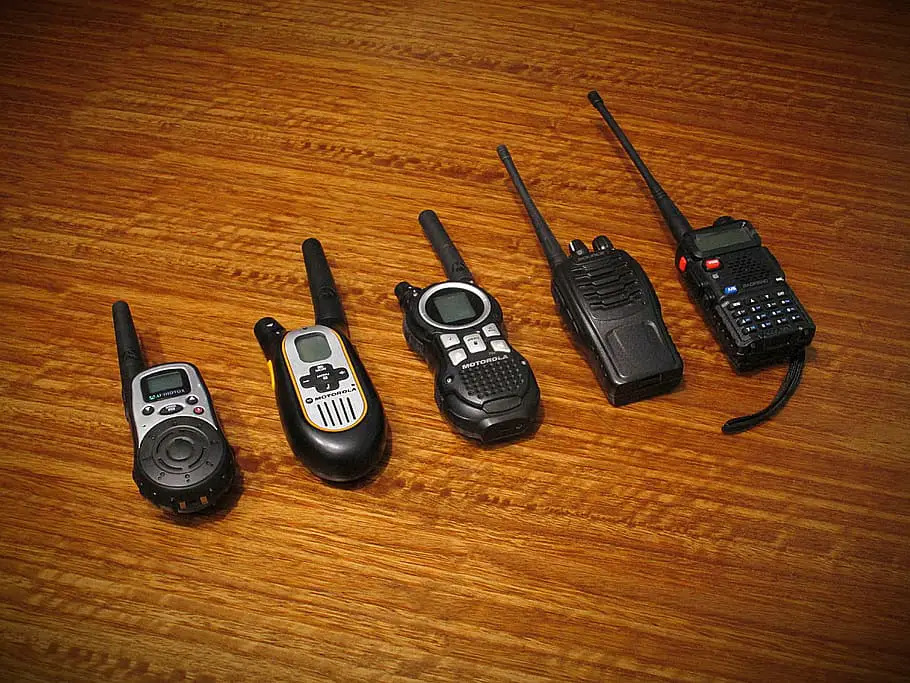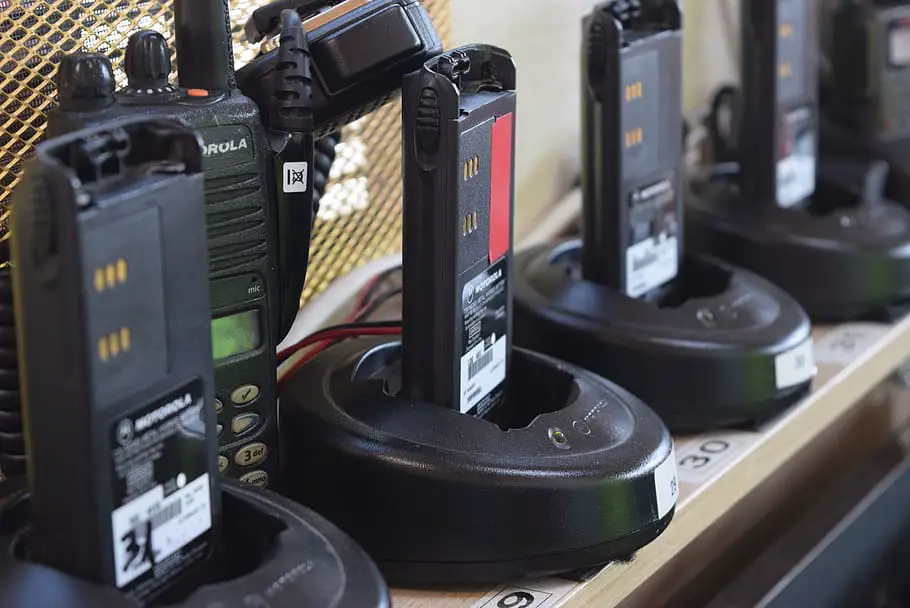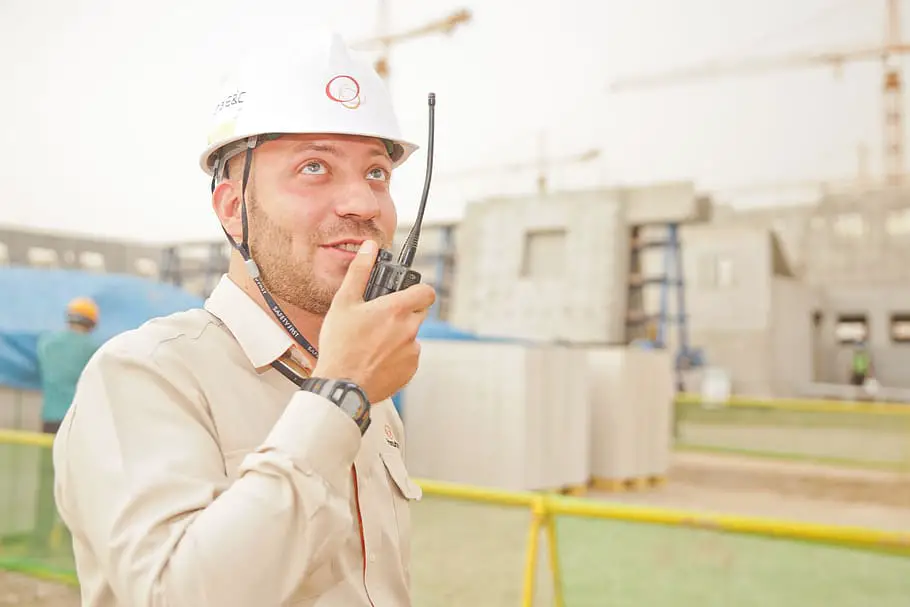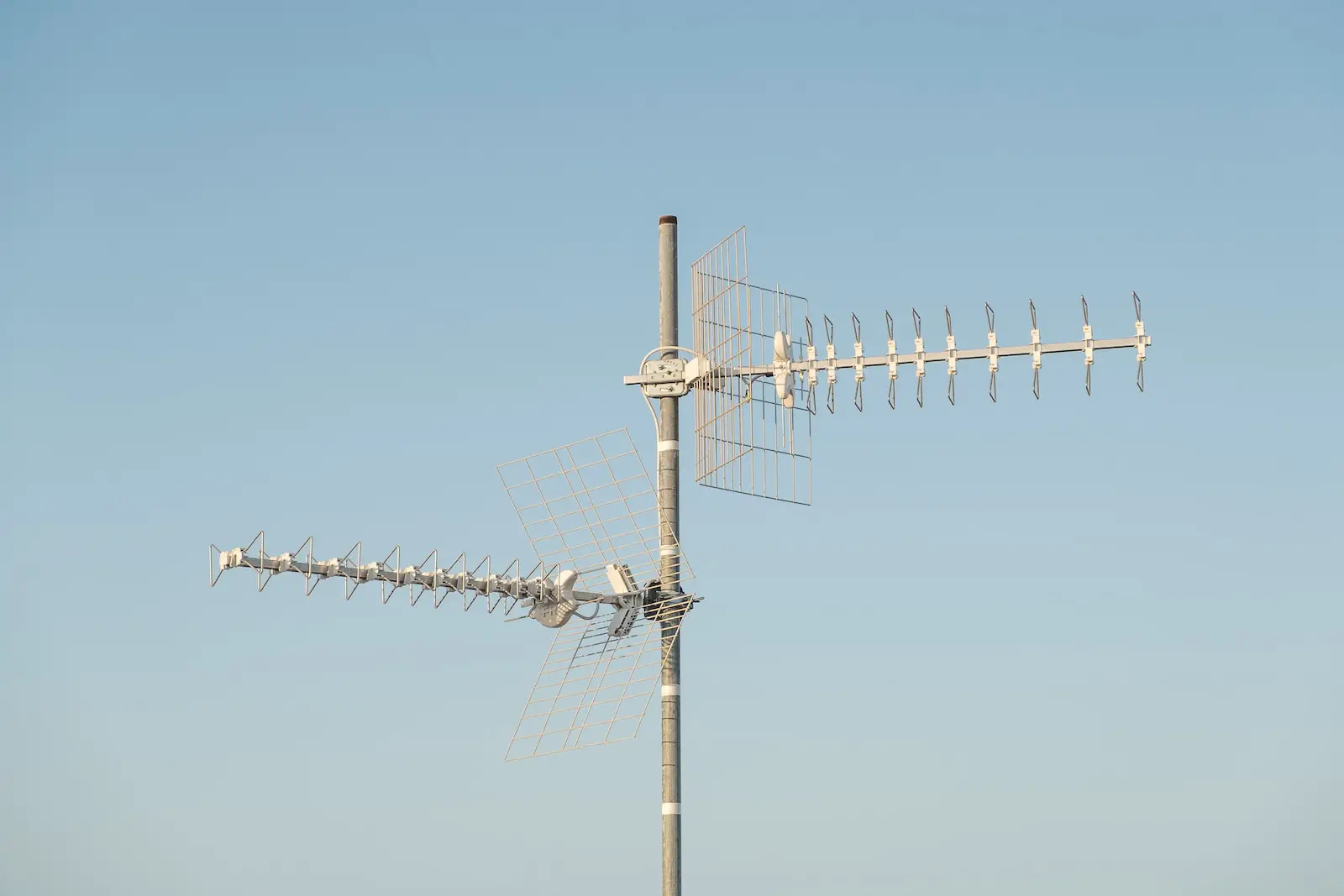Analog two-way radios are an intriguing piece of tech. They let people communicate wirelessly over short distances. Their simple yet effective design is used in various industries like construction, hospitality, and event management.
These radios operate on a particular frequency band, using analogue signals for communication. A key advantage of analogue two-way radios is their ease of use. You don’t need complex setups or technical knowledge – turn them on, select the channel, and start talking to your team.
Moreover, they offer reliable communication, even in harsh environments. Whether in remote areas or huge buildings, they provide steady coverage without disruptions.
And analogue radios are cost-effective compared to digital ones. They are often cheaper and available in the market. This makes them an excellent choice for small businesses or organizations looking for reliable communication solutions on a budget.
How Analog Two-Way Radios Work
To understand how analogue two-way radios work, let’s dive into the basics of analogue technology and the components that make up these radios. By exploring these sub-sections, you’ll gain valuable insights into the inner workings of analogue two-way radios and how they facilitate communication. So, let’s get started!
Understanding the Basics of Analog Technology
Analog tech works by sending signals that are changing in frequency or strength. Unlike digital signals, which are discrete values, analogue signals show continuous data. This helps two-way analogue radios accurately capture, send, and interpret audio messages.
Analog tech also gives a vast range. Radios can cover huge areas without signal loss. Plus, analogue radios are easy to make, so they are reliable and of great value.
But the best part of analogue two-way radios is their dependability, even in harsh conditions. Digital signals may not work with weak signals or interference, but analogue tech remains strong. This is important for people in emergencies or remote areas who need clear communication.
To understand how excellent analogue tech is, you have to experience it. Step away from digital and try analogue two-way radios. Don’t miss the chance to connect and improve communication with this classic tech.
Exploring the Components of Analog Two-Way Radios
Analogue two-way radios are intricate devices. They rely on different components to work correctly. Let’s explore these components to understand how they function and the technology behind them.
The components found in analogue two-way radios include:
- Transmitter – converts voice or data into radio waves for transmission.
- Receiver – captures radio waves and converts them back into voice or data.
- Antenna – amplifies the signal and allows for communication over long distances.
- Battery – provides power to keep the radio running.
Analog two-way radios also have extra elements, such as volume controls, channel selectors, squelch circuits, and external jacks for headphones or microphones. These different pieces make it easier to use the radio in various settings.
By knowing the components of analogue two-way radios, we can appreciate their complexity and engineering. Even though digital technology is advancing, analogue two-way radios remain dependable tools for situations when simplicity and robustness are needed.
Discover more about analogue two-way radios if you’re interested in the technology or looking for a reliable communication solution. Don’t miss out on the possibilities they offer for communication in various industries and scenarios!
Choosing the Right Analog Two-Way Radio

To ensure you make the right choice when selecting an analogue two-way radio, let’s dive into the factors that need consideration. Additionally, we’ll explore popular brands and models of analogue two-way radios. Ready to find the perfect radio for your needs? Let’s uncover the key elements and options available to you!
Factors to Consider in Selecting an Analog Two-Way Radio
When selecting an analogue two-way radio, there are several things to consider. These will help you find the right radio for your needs.
- First, check the frequency range. This will tell you how far the signal can transmit and receive. Adjust the content to fit your usage – whether for short-range communication in a building or long-range communication across an area.
- Second, assess the power output. High power output lets you communicate over a longer distance. It is best to use it outdoors or in large areas with weak signal strength.
- Third, check the battery life. Long-lasting batteries ensure no interruptions and no need for recharging or replacement.
- Fourth, examine the durability and ruggedness. If you are using it in harsh conditions or risk physical impact, opt for a model with waterproofing or shock resistance.
- Fifth, consider size and weight. A smaller, lighter model is easier to carry if that’s what you need.
- Lastly, look for extra features like noise cancellation or encryption. This can make communication better in noisy places or when exchanging secure information.
Bonus: According to a TechRadar Pro study, models with superior waterproofing can keep communication consistent even in downpours.
Popular Brands and Models of Analog Two-Way Radios
Analog two-way radios are a popular choice. They provide dependable communication for a range of industries and tasks. These are some of the top models available.
Check out this list of brands and models:
| Brand | Model |
|---|---|
| Motorola | CP200 |
| Kenwood | TK-3402U |
| Icom | F1000/F2000 Series |
| Hytera | TC-508 |
| Vertex Standard | VX-261 |
Each brand and model has their pros. For instance, the Motorola CP200 is strong and has a long battery life. The Kenwood TK-3402U has superior sound and GPS tracking. The Icom F1000/F2000 series is small but still powerful. The Hytera TC-508 is budget-friendly.
When selecting an analogue two-way radio, consider what you need it for. Range, frequency compatibility, and accessories are all important. Don’t forget to factor in your budget.
Using Analog Two-Way Radios

To maximize your experience with analogue two-way radios, we have the perfect solution: a step-by-step guide on setting up and using them, along with tips and tricks for optimizing performance. This guide will ensure you can maximise your analogue two-way radios and enjoy seamless communication.
Step-by-Step Guide on Setting Up and Using Analog Two-Way Radios
Utilizing Analog Two-Way Radios? Let’s explore!
- Step one: Power on the radios. Make sure they have batteries or are charged. Push the button or knob to power them up.
- Step two: Set the channel. Use the display or dial to pick the number.
- Step three: Adjust volume and squelch levels. Change the volume using the controls. Set the squelch level to avoid background noise.
- Step four: Establish communication. Press the PTT button and speak into the mic. Release the PTT to listen for responses.
- Step five: Monitor channels. Especially in critical situations when urgent communication is needed.
- Step six: Practice good radio etiquette. Wait till others finish speaking before responding. Keep messages brief and informative. Avoid unnecessary chatter.
Analogue two-way radios are popular. They are reliable and easy to use. In history, they were used in WWII by military forces. Technology has improved features and functionality while keeping their robustness.
To master analogue two-way radios, practice is critical. Understand the equipment’s capabilities. Read the manufacturer’s instructions for specific models. Explore additional resources to enhance your knowledge.
Tips and Tricks for Optimizing Performance
- Enhance your analogue two-way radio performance with a few simple steps!
- Charge the battery and check its condition.
- Then, adjust the squelch control to reduce static noise.
- Select the appropriate channel for clear communication.
- Keep the antenna extended for maximum range.
- Also, avoid obstructions like buildings that can interfere with signal transmission.
- Regular maintenance is vital too!
- Clean contacts and connectors with a soft cloth to prevent interference or signal loss.
- Headphones or earpieces will improve audio quality and privacy during communication.
- In the late 20th century, engineers discovered a revolutionary method to increase signal strength.
- They developed an advanced antenna design that increased transmission distance and clarity.
- By following these steps, performing maintenance, and staying up to date with tech, you can optimize your analogue two-way radio for seamless communication.
Advantages and Limitations of Analog Two-Way Radios

Let’s dive into the sub-sections better to understand the advantages and limitations of analogue two-way radios. We’ll start by highlighting the benefits of analogue technology and exploring how it enhances communication. Then, we’ll address the drawbacks and challenges associated with analogue radios, providing insights into their limitations.
Highlighting the Benefits of Analog Technology
Analog tech offers many benefits.
- It is simple and easy to use, perfect for those not tech-savvy.
- It has more comprehensive coverage than digital radios, making it reliable in remote areas.
Analogue two-way radios are more affordable than digital ones, making them the better choice for cost-conscious businesses. They are also compatible with older equipment so that they can be easily incorporated into existing systems.
Another advantage is sound quality. Analogue signals offer clear audio transmission, ensuring messages get through accurately. This is especially important in emergencies.
That said, analogue tech has its drawbacks. It lacks advanced features like text messaging and GPS tracking that digital radios have.
Addressing the Drawbacks and Challenges
Several techniques have been put in place to tackle the issues of analogue two-way radios. Here’s a look at how these problems have been solved.
| Challenge | Solution |
|---|---|
| Limited Range | Repeaters |
| Poor Audio Quality | Improved mic tech |
| Interference Issues | Digital radios |
| Lack of Privacy | Encryption & secure channels |
More details must be thought of. For example, battery technology advancements mean two-way radios can run longer. Plus, GPS capability integration has improved tracking and communication in many industries.
Organizations must switch to modern communication solutions rather than sticking with analogue systems. Businesses can achieve more efficient operations, increased productivity, and better safety standards by choosing digital two-way radios with more features.
Take action now! Upgrade your communication system and take advantage of the benefits modern technology offers. Get ahead of your competition and boost efficiency and effectiveness with advanced digital radio solutions. Act today!
Maintenance and Troubleshooting for Analog Two-Way Radios
To ensure optimal performance and address problems, maintain and troubleshoot analogue two-way radios with these essential practices. Discover how to keep your devices in top shape with a focus on regular maintenance. Additionally, learn valuable troubleshooting techniques and solutions for common issues that may occur along the way.
Essential Maintenance Practices
Make sure to stay on top of radio maintenance!
Here are some tips for maintaining your analogue two-way radios:
- Inspect the exterior for any physical damage, loose connectors, or exposed wires.
- Clean the radio with a soft cloth and mild detergent.
- Ensure batteries are charged and replaced when needed. Clean battery contacts, too.
- Check the antenna is securely attached and undamaged – watch for any bends or breaks.
- Test audio quality by transmitting and receiving messages. Adjust volume levels to ensure clear communication.
- And don’t forget to update your software – these updates often include bug fixes and performance enhancements.
Be sure to store radios in a dry and relaxed environment. Keep spare batteries on hand for emergencies. Avoid extreme temperatures and humidity. Lastly, invest in protective cases to guard against accidental drops or impacts.
Maintaining your analogue two-way radios is essential! Not doing so can lead to poor performance, increased downtime, and costly repairs. Maximize your radio’s potential – prioritize maintenance today!
Common Issues and Troubleshooting Techniques
“Common Issues and Troubleshooting Techniques” are essential for keeping analogue two-way radios in good working order. Let’s look at some common problems and their solutions.
Here’s a table summarizing the main issues and their respective troubleshooting techniques:
| Issue | Troubleshooting Technique |
|---|---|
| Poor Signal Reception | 1. Check the antenna connection 2. Verify frequency settings 3. Look for obstructions |
| Weak or No Audio | 1. Ensure volume is turned up 2. Check the microphone connection 3. Replace batteries |
| Interference | 1. Adjust squelch settings 2. Change frequencies 3. Locate the source of interference |
| Radio Not Turning On | 1. Check battery connections 2. Replace or charge batteries |
| Excessive Background Noise | 1. Use noise-cancelling microphones or headsets 2. Adjust radio settings |
Plus, it’s essential to regularly clean your radio to prevent issues caused by dirt and debris accumulation on buttons and connectors.
To conclude, maintaining analogue two-way radios is essential for continuous communication in various industries.
Fun Fact: A report by Radioworld.com shows that analogue two-way radios remain popular due to their durability and compatibility with existing systems.
Conclusion: Embracing Analog Two-Way Radios in a Digital World
Analog two-way radios may seem old-school. But they still have their place in our digital world. They offer reliable communication in areas with no cell coverage or during emergencies. They are durable, easy to use, and no dialling or waiting for connection is needed.
Analogue radios have a longer battery life than digital radios. This makes them great for extended outdoor adventures or places with limited power sources. They are simple to use and allow people to communicate quickly without the distraction of apps or other digital features.
Analogue radios directly connect users without infrastructure like cell towers or Wi-Fi networks. This can be very helpful in remote areas or during disasters when regular communication channels are down. Analogue radios provide dependable communication when it’s needed most.
Let me share a story about the importance of analogue two-way radios. A group of hikers were lost in a forest without cell phone service. Luckily, someone had an analogue broadcast. They used it to contact emergency services and get back to safety. Their situation could have been much worse without this reliable form of communication.
Frequently Asked Questions
Q: What is an analogue two-way radio?
A: An analogue two-way radio is a device that allows communication between two or more people using radio waves. It works by transmitting and receiving audio signals, similar to a walkie-talkie.
Q: Are analogue two-way radios still used today?
A: Absolutely! Despite the rise of digital communication, analogue two-way radios are still widely used in industries like construction, security, and hospitality. They are known for their reliability and simplicity.
Q: Can I use an analogue two-way radio for long-distance communication?
A: Analog two-way radios are generally used for short to medium-range communication. However, some models have a higher output power and can cover longer distances. Keep in mind that the terrain and obstacles can affect the range.
Q: How many channels does an analogue two-way radio have?
A: The number of channels varies depending on the model of the radio. You can find analogue two-way radios with a few tracks to dozens of channels. More channels allow for better organization and communication within a group.
Q: Do analogue two-way radios require a license to use?
A: In many countries, a license is required to use specific frequencies on analogue two-way radios, especially if operating on business or government bands. However, license-free frequencies are also available for use by the general public.
Q: Can I use an analogue two-way radio with other brands?
A: Yes, most analogue two-way radios operate on standard frequency bands, so you can generally use radios from different brands together. However, compatibility may vary, so it’s always recommended to check the specifications and ensure matching frequencies and codes



